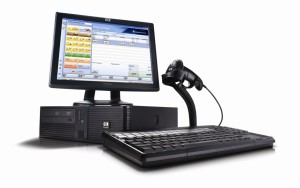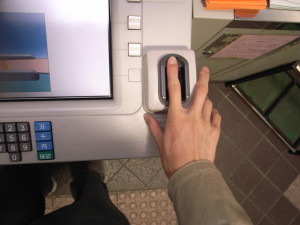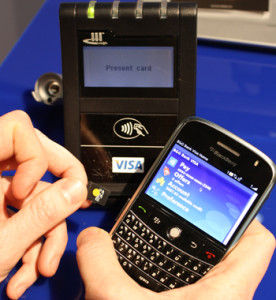Category: Smartphone
February 13th, 2014 by Elma Jane
Becoming an e-commerce entrepreneur is an increasingly attainable dream for many aspiring business owners, as new online sales platforms and Web design tools continue to emerge. While just about anyone can launch an online business, it takes a dedicated salesperson to actually succeed, and that means staying on top of current marketplace trends.
If you’re ready to take your e-commerce business to the next level in 2014, watch these five current trends in online sales:
Access through smartphones, tablets and other mobile devices. Major gains seen in e-commerce usage of mobile devices such as smartphones and tablets, especially during the holiday season. Trend to accelerate as mobile adoption continues to increase and more mobile technologies become available. Small businesses should have a mobile version of their website, with mobile-optimized checkout to help facilitate a better mobile experience. Small retailers should also look at their site across multiple mobile devices and pay attention to new technologies, such as smartwatches.
Goodbye, traditional SEO. Google is constantly updating its algorithm in an effort to serve the best, most relevant content to its users. This means that traditional (SEO) search engine optimization tactics are falling by the wayside, and an increased push toward quality, unique content — along with social media signals — will be of huge importance in 2014. To help stay ahead of the SEO curve, small retailers should focus less on Traditional SEO Tenets like keyword usage and density, and instead aim efforts toward creating content that is tailored and useful for their target audience. Example, create more lifestyle-oriented content in the form of blog posts, videos and other types of media that encourage sharing by readers.
Increased dependence on data. Smaller online businesses continue to expand their presence across channels, the need to turn to performance data from both a channel-specific and holistic standpoint becomes even more important. Google Analytics is a good tool for this, because business owners can measure their site traffic from multiple devices and referral sites.
Small shops squeezed by larger merchants. Mega-retailers like Amazon continue to steal market share from other big-box retailers (both online and offline), smaller online businesses will need to become more nimble in how they compete, from a price, customer-service and marketing standpoint. This involves identifying true points of difference from larger merchants, showcasing these points in marketing and branding, and delivering personalized experiences.
The importance of multichannel selling. Customer shopping behaviors become more fragmented, so must the presence of small online businesses owners. Simply having an e-commerce site is no longer enough. Small and medium-size businesses (SMBs) should begin looking for efficient ways to expand their presence, including integrations with various shopping feeds and other outlets that can reach more consumers.
Posted in Best Practices for Merchants, Credit card Processing, e-commerce & m-commerce, Electronic Payments, Internet Payment Gateway, Mobile Payments, Mobile Point of Sale, Point of Sale, Small Business Improvement, Smartphone Tagged with: content, e-commerce, integrations, mobile adoption, Mobile Devices, mobile version, mobile-optimized checkout, multiple devices, online business, online sales, search engine optimization, shopping feeds, Small and medium-size businesses (SMBs), small online business owners, small retailers, Smartphones, smartwatches, social media signals, tablets
February 10th, 2014 by Elma Jane
Is traditional POS on its way out? Not so fast. It is likely to be an enhancement rather than a replacement to traditional POS.
Trending topic when it comes to POS is all about the mobile kind because Mobile Point of Sale (POS) systems have rocked the retail world. When one searches the term POS, nearly every article that comes up is all about mobile. Many seem to believe it will change the retail industry.
There is definitely a need and a place for both.
Retailers everywhere have incorporated the Internet into their business model by creating multi-channel sales strategies, such as e-commerce, digital marketing, social media marketing, online product information, specifications, reviews and online customer service.
In addition to their online presence, these same retailers have started to bring the Internet in-house by integrating such services as customer centric promotions at point of sale, introducing loyalty programs and member registration, facilitating digital signage, offering e-receipts via email, and self check out centers; all at the traditional POS kiosk. In fact, 95% of all sales transactions are conducted via traditional POS terminals.
Why bother with mobile POS anyway?
While it’s true that traditional POS system won’t be going anywhere soon and with good reason, mobile POS systems have allowed retailers to make great strides when it comes to efficiency and customer service, as well as customer satisfaction.
Companies have made big changes in the way they handle customer transactions in-store, thus affording faster checkout, waiting line reduction, consultative selling and more.
List of mobile POS benefits goes on:
Email Receipts – Better for the environment, more convenient for customers and faster to process, a digital purchase receipts sent via email tells the customer that you care about the earth and about them.
Expanded Reach – With mobile POS, your sales are no longer confined within the four walls of your brick and mortar store. Sidewalk sales, seasonal mall kiosks, and special sponsorship events are just a few examples of all the places you can take your retail sales to, with a POS in hand.
Inventory and Price Search – When customers can be assisted with finding an item color, size or availability on the spot, rather than having to wait in line to do so, it makes them happier. The same can be said for pricing. POS in the hands of store reps can go a long way toward customer satisfaction.
Inventory Return Stations – There is always a certain volume of returns, but that volume increases for retailers particularly after the holidays. The implementation of mobile POS allows for retailers to set up additional return stations in order to avoid long lines and customer frustrations.
Mobile POS goes Mobile – Your investment in your company POS system doesn’t need to be one size fits all, regardless of store traffic volume in one location or another. Retailers may opt to have a blow out sale in one location, thus require additional checkout power for that location for a specific period of time. With mobile POS, devises and licensing can be utilized throughout different store locations on an as needed basis.
Optional Seasonal Subscription – The great thing about mobile POS is that you needn’t pay for a POS system year round if you’re not using it year around. Seasonal spikes in retail sales warrant the additional cost of extra POS licensing and hardware, but the rest of the year your budget shouldn’t need to encompass more than what is needed. Mobile lets you better manage your overall POS investment.
Storewide Promotion Opportunities – Mobile POS has allowed retailers to drive sales in various sections of the store by holding demonstrations or promotions in different departments to tout products or services. Customers can be marketed and sold to, on the spot.
The growing industry of mobile payments doesn’t stop at in-store mobile POS. Digital wallets like Google Wallet and Apple Passbook, mobile-to-mobile cell phone transfers, Near Field Communication (NFC) payments, mobile device credit card swipe and other emerging technologies are quickly changing our cash and credit card world.
What about traditional POS?
Mobile payment systems are indeed terrific. So, when should you consider going with traditional POS? The reality is, in addition to the aforementioned benefits of traditional checkout kiosk functions, there times when mobile POS simply will not suffice.
Mobile POS is great when a customer wants to choose and pay for one item while on the sales room floor, but what about when the customer has a multitude of items? Ringing up and bagging groceries, removing anti-theft mechanisms, neatly folding and bagging clothing items and managing the sales of numerous agents, stations or departments are just a few examples of situations that often require the traditional POS checkout station.
By combining traditional POS strategies with mobile POS flexibility, retailers can leverage the command of a complex, and multi-dimensional, marketing and retail sales management system.
Posted in Credit card Processing, e-commerce & m-commerce, Electronic Payments, Internet Payment Gateway, Mobile Payments, Mobile Point of Sale, Near Field Communication, Point of Sale, Smartphone Tagged with: apple passbook, checkout station, credit card swipe, customer satisfaction, e-commerce, e-receipts via email, faster process, Google Wallet, Loyalty Programs, mobile payment system, mobile point of sale, mobile pos, mobile-to-mobile cell phone transfers, MPOS, multi-channel sales strategies, Near Field Communication, nfc, online customer service, online presence, POS, retail industry, retail sales, retail sales management system, traditional POS kiosk
January 30th, 2014 by Elma Jane
Some employers might think that setting limitations on things like mobile devices and Internet access is the answer to get more done during workday, but many companies have found that giving their workers more freedom and flexibility through certain policies is the key to increased efficiency.
Progressive companies are evolving their benefits programs and finding ways to drive employee productivity without breaking the bank, said Chris Duchesne, vice president of global workplace solutions at Care.com, a care provider matching service. They are providing tools to help reduce the amount of time employees spend on personal issues, giving them time back in their day that they often designated back to working.
Duchesne suggested a few policies that can be implemented to boost productivity, morale and culture among employees: Ways to improve Work-Life Balance Today
Demonstrate Leadership. There’s a trickle-down approach to how supervisors mentor. It starts with human resources departments and top executives recognizing and rewarding employees for their advances and their contributions. Public shout-outs, spot awards and profiles in regular company communications demonstrate company values and reinforce them across the workforce. The most productive companies have a policy and culture in place where the appreciation for each employee is apparent.
Some companies are hesitant to implement changes because they are concerned about costs, but these policies are often not as expensive as employers may think. Even if they do cost money, they don’t have to happen all at once.
Change happens gradually, and employers should feel comfortable implementing new work-life policies in stages. They should figure out what the actual costs will be and even have pilot programs before rolling them out company-wide. There is also a misperception that employers will have to bring on additional staff to support these new programs. You likely have existing employees who can fit these new programs into their current job responsibly. Most people are passionate about work-life issues and will be happy to help you implement new policies to make their lives easier.
In the long run, these types of benefits programs and policies can actually have a positive impact on company’s bottom line as well.
Employers lose billions of dollars each year in total productivity loss when employees take unexpected leave due to personal issues. Work-life and culture programs will be a critical differentiator in the new workplace and have the ability to drive innovation, creativity, loyalty and increased productivity.
Encourage breaks. Creating mandatory fun sounds like a contradiction, but celebrating birthdays, allowing budget for team lunches, holding quarterly group activities or even having a beer or snack cart for random holidays can boost team spirit and culture. A break for forced fun can reduce mental fatigue, increase collaboration and morale, and offer employees the opportunity to clear their heads.
Provide flexible work options. With respect to both work schedule and work location, as long as work gets done, it shouldn’t matter where or when it was accomplished. Recent Gallup research found that employees who work remotely even part of the time are both more engaged and more productive. If it’s possible for your employees to complete their tasks outside the office, give them the option to do so.
Reduce stress through family-care programs. Help employees manage their personal and professional lives with programs and services that help them address the most pressing and stressful needs in their lives, their families. And it’s not just about child care, either. Think about how you can help them take care of their aging parents, their pets and their households, too.
Posted in Best Practices for Merchants, Small Business Improvement, Smartphone Tagged with: boost productivity, communications, employee productivity, freedom and flexibility, human resources, implement, internet access, leadership, Mobile Devices
January 29th, 2014 by Elma Jane
Ecommerce and mobile-based e-commerce have grown significantly this year. Cyber Monday ecommerce sales, as an example, reached $1.735 billion originating from desktop and laptop devices, according to comScore. Even Black Friday, which is better known for brick-and-mortar retail sales, saw online spending reach $1.198 billion in the United States, again according to comScore. Mobile online spending may also have grown, as some reports indicate that mobile-based site traffic was up 55 percent around Thanksgiving.
Many ecommerce merchants are enjoying a robust holiday selling season even as some brick-and-mortar stores are seeing relatively flat Christmas sales. To ensure continued growth and success, Internet retailers may want to challenge their businesses to improve in several areas in 2014.
Retailers, however, should not rest on their current success, but rather should challenge their businesses to improve in several areas, including free shipping offers, mobile optimization, personalization, data driven decision making, and cross channel sales.
Offer Free, Two-Day Shipping
The first challenge for online sellers in 2014 may be to find ways to offer free, two-day shipping to all or most shoppers. While it is likely there will still be minimum purchase and maximum weight requirements and restrictions, online shoppers are going to expect faster free shipping options thanks, in part, to the growth in services like Amazon Prime and ShopRunner.
Consider order fulfillment services, distributed warehouses, drop shipping, or even partnerships with other retailers to help meet this challenge.
Offer Personalization and Customization
Personalization and customization could be a significant competitive advantage in 2014.
Challenge your business to finally begin offering personalization and customization both onsite and in marketing. The easiest place to start may be with email marketing. Work to segment email marketing campaigns so that they address customers by name and with relevant products and offers that are based on an individual’s or group of shoppers’ stated preferences or on-site behavior.
Taking on this challenge means that the retailer’s marketing department will need to collect meaningful information about what interests shoppers and organize separate, custom campaigns around those interests.
Put Mobile Design and Marketing First
In November, IBM reported that mobile devices accounted for 31 percent of U.S. ecommerce-related web traffic around the Thanksgiving holiday this year, and that 17 percent of ecommerce transactions came from smartphones or tablets. On average, tablet users spent more than $126.00 per order, and smartphone users spent about $106 per order.
This data shows that mobile e commerce is not simply a novelty, but rather a must have for 2014.
If an e-commerce business is not optimized for mobile sales, 2014 is the year to take on that challenge, including offering a responsive design and mobile friendly payment options.
Sell Seamlessly Across Channels, Devices
Try to think of every way that a shopper might interact with an online store, and then make all of those touch points work together in 2014.
Retailers online or in physical stores need to offer shoppers a seamless, cross channel shopping experience that makes buying things easier for the customer. To continue to enjoy success in 2014, consider offering shoppers the ability to share orders across devices, applications, and even marketplaces.
In practice, this might mean that items added to a cart in an online store show up in the cart for the retailer’s iPhone app too. Or that a customer’s order history displayed on a retailer’s site shows orders placed on-site and via a marketplace like Amazon or eBay.
Use Big Data for Big Information
In 2014, find sources of good, usable Big Data, and put the resulting big information to use.
As an example consider, Weather Trends International, a Big Data company that uses historical weather information and advanced data processing to accurately predict weather 11 months in advance. This sort of Big Data information could show a snowboard and ski retailer what sort of winter major ski resorts are likely to have next year, and could inform purchasing and inventory choices.
Similarly, knowing that a particular region is going to have a warmer than normal July and August might impact how, where, and when a clothing retailer promotes shorts or bikinis on Facebook or AdWords.
Big Data is a popular trend in business and in marketing. The concept can mean different things to different businesses. For ecommerce, retailers should seek to use Big Data to gather big information, if you will, that may be used to make better buying and selling decisions.
Posted in Credit card Processing, e-commerce & m-commerce, Electronic Payments, Internet Payment Gateway, Mobile Payments, Mobile Point of Sale, Smartphone, Visa MasterCard American Express Tagged with: adwords, Amazon, big data, big information, brick and mortar, cross channel, cyber, drop shipping, e-commerce, ecommerce, Facebook, internet retailers, laptop devices, Mobile Devices, mobile friendly payment options, mobile optimization, mobile-based site, on-site, online, online shoppers, online store, onsite, personalization, retailers marketing, retailers online, shopping experience, smartphone, Smartphones, tablet, tablets
January 23rd, 2014 by Elma Jane
Commonwealth Bank of Australia (CBA) will now offer the embedded payments service to customers that use the Samsung Galaxy S4 and have CBA’s mobile banking app. MasterCard indicated that this development allows these customers to make payments at more than 1.6 million PayPass-enabled merchant locations around the globe.
MasterCard is just one major issuer that views embedded chips in NFC-enabled phones as the key to unlocking mobile payments globally. But, its news yesterday of how it is going to leverage its Samsung partnership puts a bit of a different spin on digital wallets and mobile payments.
“Our focus is on helping consumers shop and pay in a way that best fits their needs, across all of their devices,” Mung Ki Woo, group executive of mobile and industry alliances at MasterCard, said in a December 11 statement.
The move is part of MasterCard’s continued relationship with Samsung. Earlier this year, MasterCard teamed with the handset maker to offer exclusive deals and special discounts to Samsung Galaxy S4 users in Bangladesh.
Posted in Electronic Payments, Financial Services, Mobile Payments, Mobile Point of Sale, Near Field Communication, Smartphone, Visa MasterCard American Express Tagged with: commonwealth, devices, Digital wallets, embedded payments, make payments, MasterCard, merchant, mobile banking app, Mobile Payments, nfc-enabled phones, paypass, Samsung, shop and pay
January 13th, 2014 by Elma Jane
Most of the world has already migrated to EMV chip technology. EMV, as commentators have noted, affects not only hardware and software, but every card payment system, device and application. Looking ahead to the 2015 liability shift, stakeholders who have not made the switch should consider these benefits of EMV.
Rather than focusing on any potential expenses, however, stakeholders should instead consider the important elements they have to gain.
EMV is here.
Benefits of EMV:
Global interoperability – Since most of the world has migrated to EMV, U.S. banks can that transition gain the ability to have their cards used with full EMV security anywhere in the world. Further, merchants benefit from this global interoperability as it allows them to process transactions coming into the U.S. from foreign travelers in the same way as domestic transactions.
Higher security – The latest data indicates that 78 percent of all counterfeit card fraud originates in areas where EMV has not yet been widely implemented, and even the most ardent detractors of EMV admit that EMV is very secure.
All stakeholders, gain a higher level of security than was available through magnetic-stripe technology.
Roadmap to mobile – POS terminals that support contactless EMV will in turn enable mobile EMV on NFC at merchants, meaning merchants can take advantages of all manner of popular payment methods, as well as the latest loyalty, location-based and couponing capabilities of mobile.
Posted in Credit card Processing, Credit Card Security, EMV EuroPay MasterCard Visa, Mobile Payments, Mobile Point of Sale, Near Field Communication, Point of Sale, Smartphone Tagged with: card, card fraud, card payment system, chip, contactless emv, counterfeit, couponing, EMV, interoperability, magnetic stripe, Merchant's, mobile, nfc, payment methods, POS terminals, secure, Security, technology, transactions, transition, travelers
January 13th, 2014 by Elma Jane
Australia & New Zealand Banking Group plans to use voice biometrics for authorizing large-value transfers to external bank accounts via its mobile banking service.
The Australian newspaper said ANZ is still piloting the voice biometrics feature, which would enable its mobile banking customers to make payments of more than A$1,000 ($910 U.S.)… The current limit for external transfers to clients of other banks using its smartphone app. Customers would authorize a higher-value payment by speaking into their smartphones, and ANZ’s IT system would compare their voices to digital voiceprints stored on its server.
The voice biometrics system will likely be launched within the next 12 to 18 months, Phil Chronican, the chief executive of ANZ’s Australia operation, said during a Sydney press conference last week.
Chronican added that ANZ also plans to use voice biometrics for authenticating transactions initiated at its call centers.
ANZ will launch the revamped mobile apps that it has been developing as part of the “Banking on Australia” initiative in the first quarter of 2014.
ANZ’s three-year old GoMoney mobile banking app and its more recent FastPay small business mobile payments service will both be re-released with new navigation and personalization options, iTNews said.
Posted in Credit card Processing, Credit Card Security, Mobile Payments, Smartphone Tagged with: authenticating, authorize, authorizing, biometrics, digital, mobile banking, Mobile Payments, mobile transactions, payments, personalization, smartphone app, transactions
January 9th, 2014 by Elma Jane
Notably after the Japanese tsunami…the Hungarian Red Cross has used mobile technology to raise funds for disaster relief, but for the first time has enlisted social media in the process. The organization is running a Facebook campaign that lets smartphone users make instant donations to aid victims of Typhoon Haiyan in the Philippines.
The donations will pass through the MasterCard Mobile app that was developed by the Hungarian m-payments firm Cellum. The solution relies on QR codes. The method is available only in Hungary.
Process works like this:
Download the MasterCard Mobile app to your smartphone and register your bank card, then follow the steps to secure your personal data.
To donate, scan the QR code shared on Facebook with the built-in scanner of MasterCard Mobile. Transaction data are displayed on the screen to ensure the donation goes to the chosen cause.
The QR code contains a minimum sum, which can be increased.
Then press the send button to review and confirm transaction data.
The app then initiates the transaction, which you need to authorize by entering your mPIN.
You will receive feedback on the successful transaction, which can later be viewed in the transactions menu.
The donations will pass through Cellum’s system and quickly go to the Hungarian Red Cross’ account, which is dedicated to typhoon relief efforts.
Donations are a matter of impulse and that people who decide to give want to act quickly, chances are they don’t carry around a pen to put down a 24-digit bank account number on a piece of paper. By the time they get home and visit their online bank where they could transfer the money, they have already been distracted by a hundred other stimuli, so they end up sending nothing. Cellum’s solution is simple; whenever the impulse hits people, they probably have their phone at hand said Cellum spokesman Balazs Inotay.
Posted in e-commerce & m-commerce, Internet Payment Gateway, Medical Healthcare, Smartphone Tagged with: account number, authorize, confirm transaction data, Facebook, m-payments, MasterCard, mobile app, mobile technology, personal data, phone, PIN, process, qr codes, Red Cross, scanner, secure, smartphone, social media, solution, successful transaction, transfer
January 3rd, 2014 by Elma Jane
Results of a new survey on overall mobile use by consumers has several ramifications for payments using mobile devices. The report, from global management consultancy Deloitte, found the number of consumers who said their device is NFC-equipped more than doubled from 2012 to 2013. More importantly perhaps, for a technology many observers have pronounced dead and buried, of those whose devices are equipped with NFC technology, more than one-third said they have made a contactless payment using their phone in the past month.
The report also found that the number of app downloads decreased 13 percent this year in the U.S. and even more in other countries. Per-app spending also decreased during the year, but the report’s authors still believe the outlook for apps is positive.
The good news is, we see a lot of potential remaining in the apps market space over the long term. We believe that the overall declines indicated in this year’s survey may be due to increasing sophistication among consumers. It is likely that they have already obtained the core apps they prefer for work and play, with those choices persisting over time as they upgrade and change their devices said Craig Wigginton, vice chairman and U.S. telecommunications sector leader for Deloitte.
Posted in Credit card Processing, Electronic Payments, Environmentally Green, Mobile Payments, Near Field Communication, Smartphone Tagged with: apps, contactless, devices, equipped, mobile, nfc, outlook, payments, Per-app, phone, report, technology, upgrade
December 30th, 2013 by Elma Jane

Google
With New Debit Card, Google Admits Digital Isn’t Everything
The maker of all things digital is introducing a debit card for accessing Google Wallet accounts. Google is getting physical.
A debit card alone is not a platform, or at least not a new one. In this case, it’s the payments version of comfort food: an everyday, easy-to-use technology to drive greater adoption of the less familiar Wallet platform.
This isn’t a new concept for a digital wallet. PayPal itself has a debit card. The significance for Google is more in its apparent acknowledgment that its business needs to play in the physical world. Earlier this week, the company ramped up its Google Shopping Express service with a partnership with Costco, further expanding its presence in the buying and selling of physical goods. Its self-driving cars are another way the company is reaching beyond digital, though never losing sight of the digital-derived lesson that the real business opportunity is in platforms, not just products.
The MasterCard-branded card is swipe-able at stores, and it can be used to withdraw cash at ATMs, Google said. The company pitched its new plastic in a blog post today as a way to pay for things offline without waiting for the money in your Google Wallet to transfer to a bank account.
This should sound familiar to users of PayPal or any other digital wallet, where the lag time between receiving money and being able to spend it makes such services marginal in the brick-and-mortar world, where most consumer dollars get spent.
That it took Google this long to make such a card available shows just how hard it is for the company to re-imagine itself as expanding beyond digital. For years, Google has supported NFC tap-to-pay technology that lets users of the few phones with such chips use their handsets to pay by Wallet at the few merchants with point-of-sale systems that support NFC. With the release of a debit card, Google seems to be acknowledging that battle is lost for now. In a world Google is trying to remake in its digital-first image, plastic still prevails.
Posted in Digital Wallet Privacy, Mobile Payments, Mobile Point of Sale, Near Field Communication, Point of Sale, Smartphone Tagged with: brick and mortar, costco, debit card, digital, handsets, MasterCard, nfc, payments, PayPal, phones, plastic, platform, point of sale, Tap to Pay, wallet









